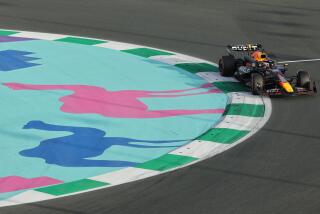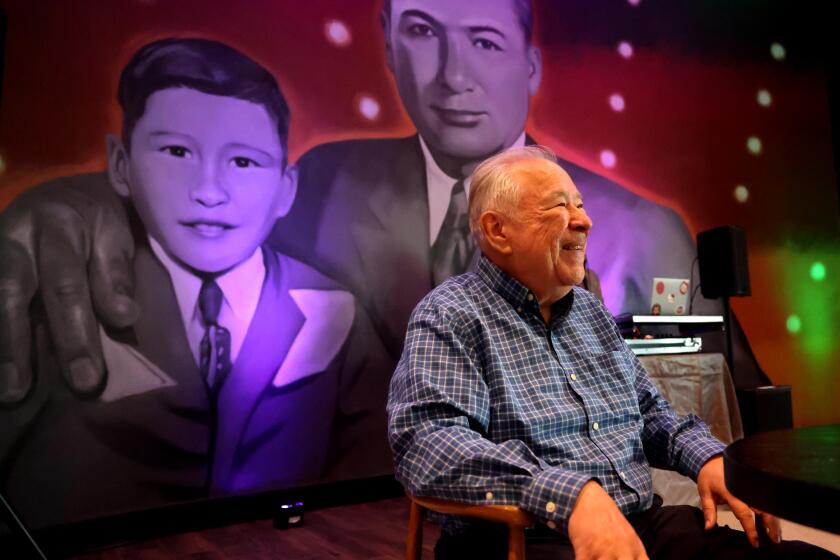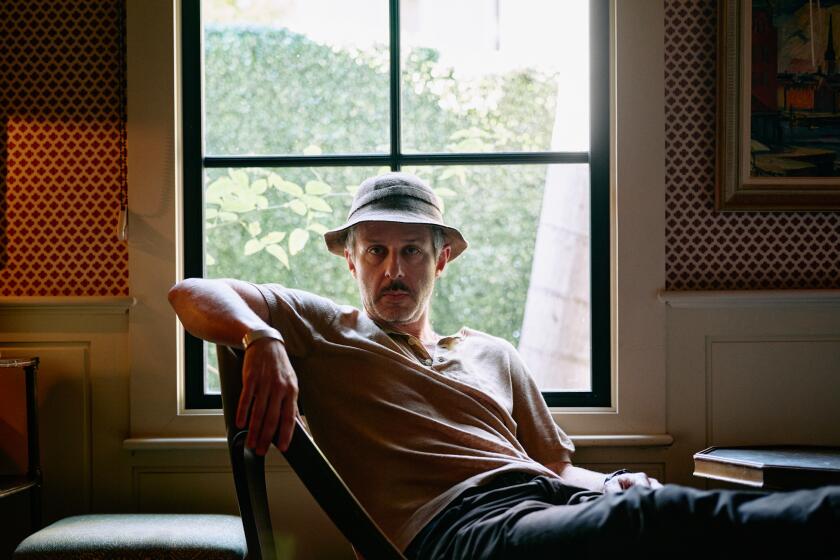Review: Leonardo DiCaprio boosts environmentally friendly racing in ‘And We Go Green’
More electric hum than internal combustion vroom, the motorsports documentary “And We Go Green” efficiently introduces Formula E to a broader audience. The fledgling all-electric auto racing circuit, launched in 2014, has garnered a devoted following internationally but, despite holding Formula E races in Long Beach, Miami and New York, has made less of an impact in the U.S.
Formula E is sanctioned by FIA (Federation Internationale de l’Automobile) and, like premier division Formula 1, holds a series of races around the world to crown driver and manufacturer champions based on an accumulated point system. (In December, FIA granted Formula E world championship status beginning with the 2020-21 season.)
Directed by Fisher Stevens and Malcolm Venville and written by Mark Monroe, “And We Go Green” — the starting declaration of each race — chronicles the 2017-18 season as Formula E works to earn its bona fides with drivers, manufacturers, advertisers and fans. Founded by Alejandro Agag, a former Spanish politician and an executive producer of the film, the series features a dozen races, starting with two in Hong Kong, before hopscotching the globe from Marrakesh to Santiago, Chile; Mexico City; Punta Del Este, Uruguay; Rome; Paris; Berlin; Zurich and finishing with a pair in Brooklyn.
The locales provide some of the worldly glitz of Formula 1 — including celebrities such as Orlando Bloom and Leonardo DiCaprio, also a producer on the film who collaborated with Stevens and Monroe on the 2016 climate change documentary “Before the Flood.” Even Pope Francis makes an appearance to bless a car. The film frequently feels like a branding exercise but manages to remain entertaining and informative. It persuasively argues for auto racing’s place in sport as well as its role as an incubator for innovations in domestic vehicles.
Monroe, Stevens and Venville wisely focus on five drivers: tightly-wound Frenchman Jean-Éric Vergne (a.k.a. JEV), Brazilian black sheep Nelson Piquet Jr. (son of the former three-time Formula 1 world champion) and his brash countryman Lucas Di Grassi, Britain’s scrappy, working-class Sam Bird, and Vergne’s easy-going teammate André Lotterer of Belgium.
While nobody stands on his own as a protagonist, there is plenty of tension and the individualization pays off as the season progresses. As journalist Hazel Southwell notes, this is a series of redemption, with several of the drivers looking to prove themselves after bumpy rides in Formula 1.
The narrative takes its time to rev the engine, but eventually the rivalries and the drama of the season takes over. As the races zoom by and the championship heats up, the movie embraces the best aspects of a good sports documentary.
Will electric cars be coming to Indianapolis or Daytona anytime soon? We shall see, but both IndyCar and NASCAR are reportedly pursuing plans to introduce hybrids in 2022. Going full electric is another big leap, but Formula E has already paved the way technologically and the real motivation for manufacturers is to sell more cars to the public — and increasingly, those cars are electric.
Advertisers, too, are keen to align with anything green. Old-school fans will miss the roar of fossil fuel engines (maybe tracks can pipe in digital sound?), but as with so many culture shifts, the real decisions will be based on corporations maximizing their ability to sell stuff.
‘And We Go Green’
Not rated
Running time: 1 hour, 38 minutes
Playing: Available June 4 on Hulu
More to Read
Only good movies
Get the Indie Focus newsletter, Mark Olsen's weekly guide to the world of cinema.
You may occasionally receive promotional content from the Los Angeles Times.











